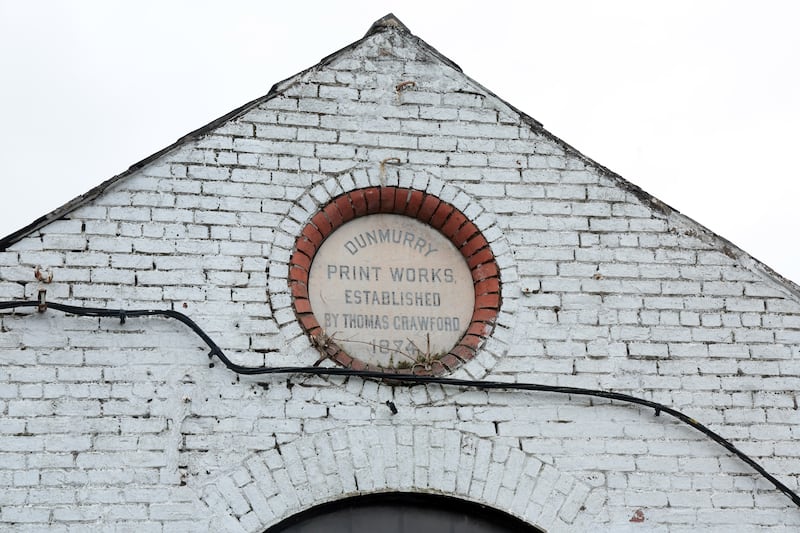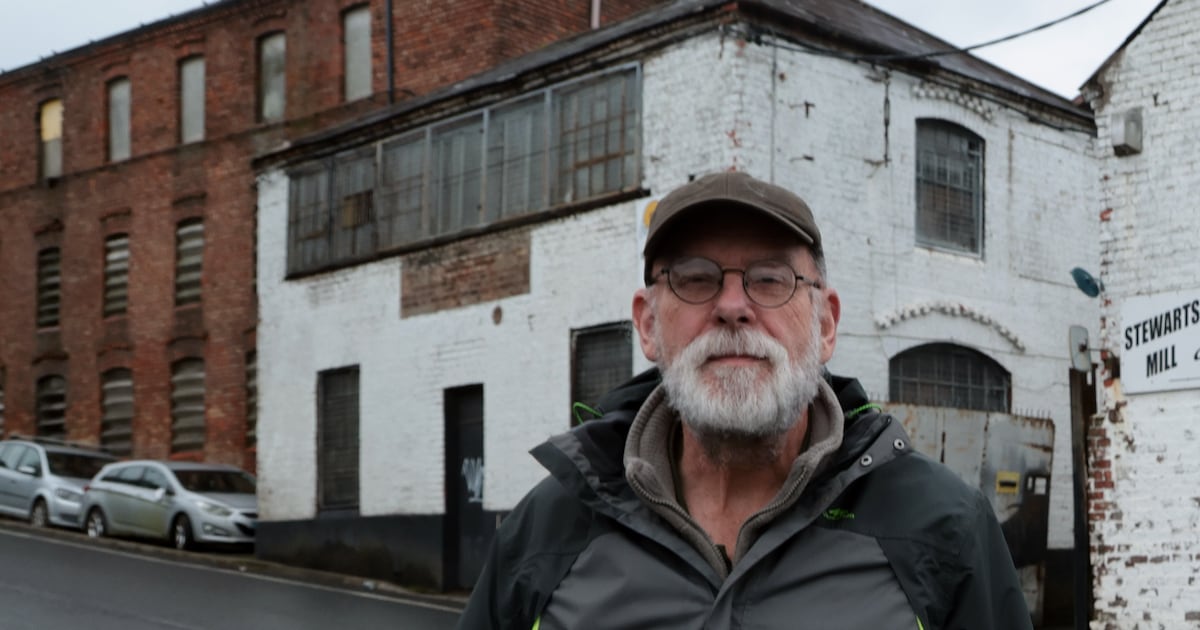A heritage group has called for greater protection of Northern Ireland’s buildings as a former unlisted mill in Dunmurry could be demolished following recent planning permission approval.
Permission was granted for plans to turn the former mill site on Upper Dunmurry lane into 32 apartments at a Belfast City Council (BCC) committee meeting last month.
A previous application for the site, which was first lodged in 2010, was refused five years ago over the retention of the building.
Read more: Spanish Armada cannon removed from Derry museum by specialist firm
However, last month the demolition of the original mill buildings was approved.
 Stewarts Mill on Upper Dunmurry Lane that is due to be demolished for apartment blocks. PICTURE: MAL MCCANN
Stewarts Mill on Upper Dunmurry Lane that is due to be demolished for apartment blocks. PICTURE: MAL MCCANN
The site, known as Stewart’s Mill, was not listed by the Department for Communities (DfC).
Chair of Architecture, Planning and Policy at Ulster Architectural Heritage (UAH) John Anderson told The Irish News that it was a “puzzle” as to why it had not been listed.
“It’s industrial heritage of the area,” he said.
“It has architectural merit; very nicely detailed in the brickwork. It’s very much a complete unit, which is rare this day.
“It’s also an integral part of Dunmurry’s history.”
Mr Anderson said that the site dates back to the mid-1800s, turning into a printworks in the 1870s and later Stewart’s textiles mill.
He added that the failure to list the mill was part of a wider issue with the council and government’s attitude towards heritage sites.
“If you go to the great American cities, they’re repurposing their mill buildings – the same across the water, the same down south,” he said.
He added that the government’s stance on heritage sites was “very difficult to understand”.
 Structural reports into the old mill said that “retention and restoration is not a viable alternative” PICTURE: MAL MCCANN
Structural reports into the old mill said that “retention and restoration is not a viable alternative” PICTURE: MAL MCCANN
“There’s a serious degree of inconsistency,” he said.
“A lot of the listings recently have been things like telephone boxes and mile posts. Yes, that’s admirable, but it shouldn’t be top of the list.
“Generations of youngsters coming up need to be able to enquire as to where they came from. If you make a place completely soulless with no history, they have no roots.
“The history is gone.”
The planning applicants stated that they would use the reclaimed bricks from the mill as part of a boundary wall facing Upper Dunmurry Lane to keep in line with the original building.
Co-owner John Maxwell, who has run a business at the mill for 20 years, told The Irish News that “nothing’s happening overnight” and that it was an investment for his future as he nears retirement.
A BCC spokesperson added that the former mill buildings at Dunmurry were “unfortunately” in “too poor a state of repair to retain and reuse”, which had been endorsed by the Planning Appeals Commission.
They said that the plans, which had been “approved by elected members, will bring much-needed new housing for the area, including seven new social housing units”.
“As a landowner, council recognises the social and environmental value of sustaining our city’s built heritage,” they said.
 John Anderson of the Ulster Architectural Heritage Society at Stewarts Mill on Upper Dunmurry Lane that is due to be demolished for apartment blocks. PICTURE: MAL MCCANN
John Anderson of the Ulster Architectural Heritage Society at Stewarts Mill on Upper Dunmurry Lane that is due to be demolished for apartment blocks. PICTURE: MAL MCCANN
They pointed to successful restoration of sites include Templemore Baths and St Comgall’s as well as the recent purchase of the Assembly Rooms.
A spokesperson for DfC said that the former mill building “sits in an area that has been surveyed twice by the department” and had also been “reviewed as a listing query by the department in 2010 and 2024″.
“The department continues to prioritise surveys for buildings that have potential to meet the listing criteria as buildings of special architectural or historic interest in line with legislation,” they said.
The department’s Historical Environment Division (HED) also requested a structural report, following which it advised “retention and restoration is not a viable alternative”.


